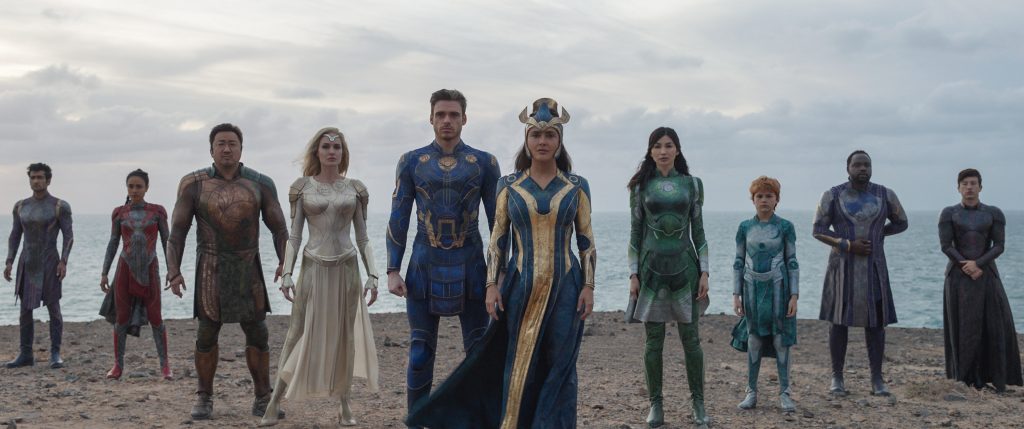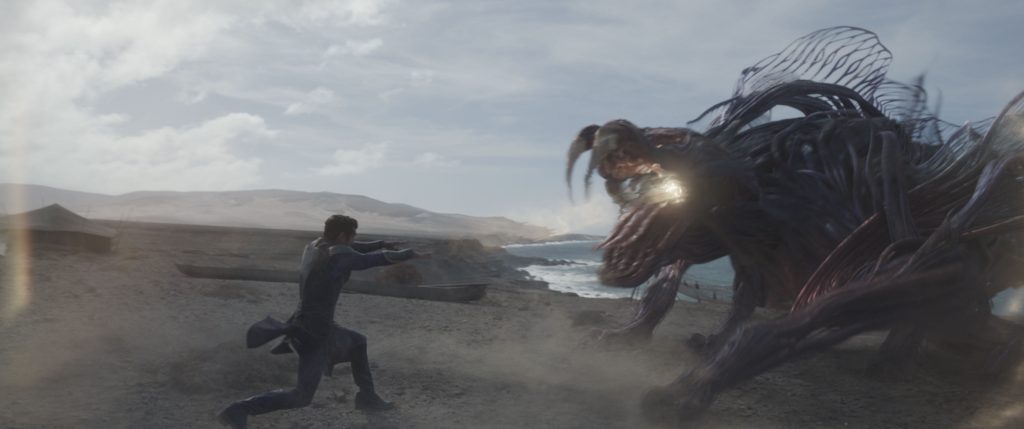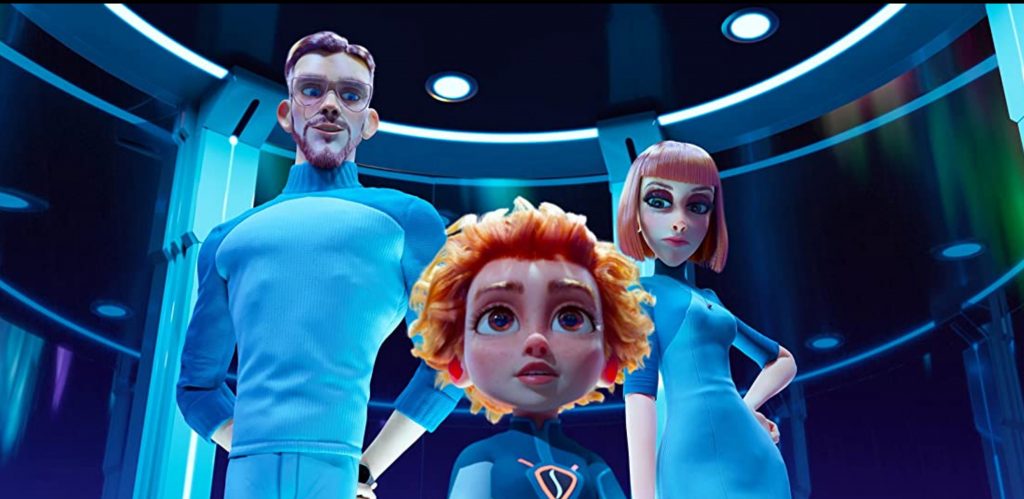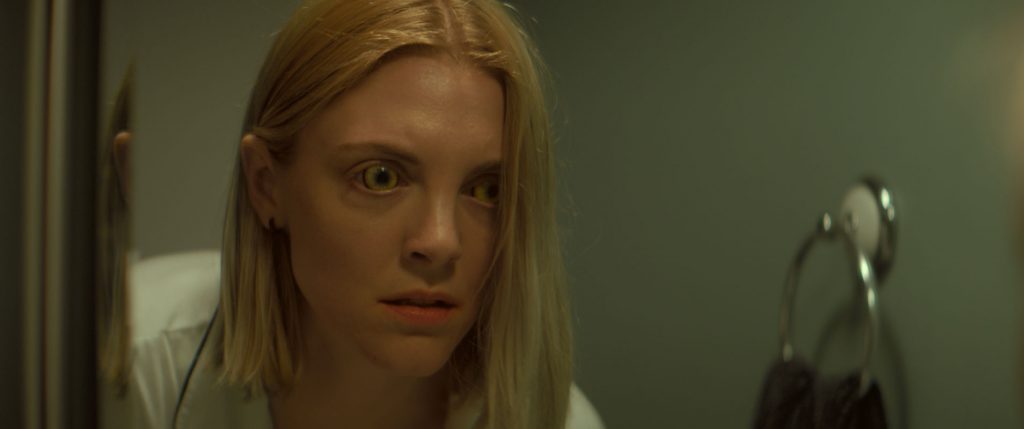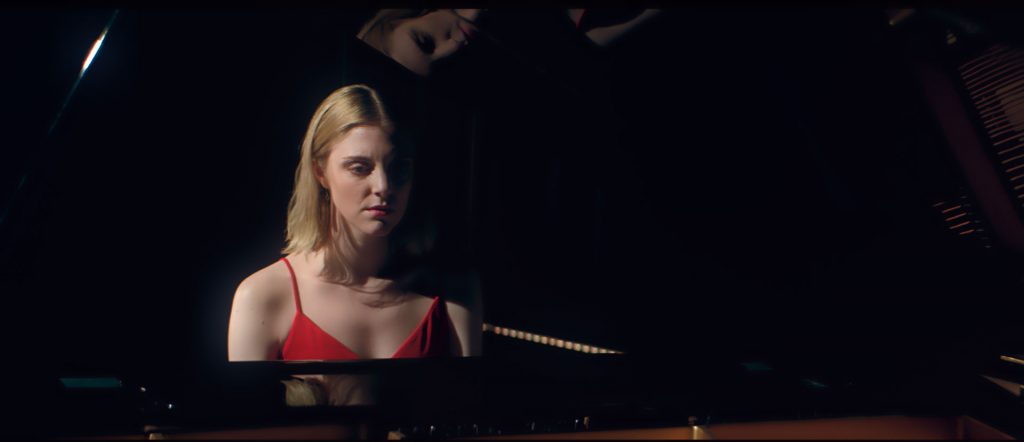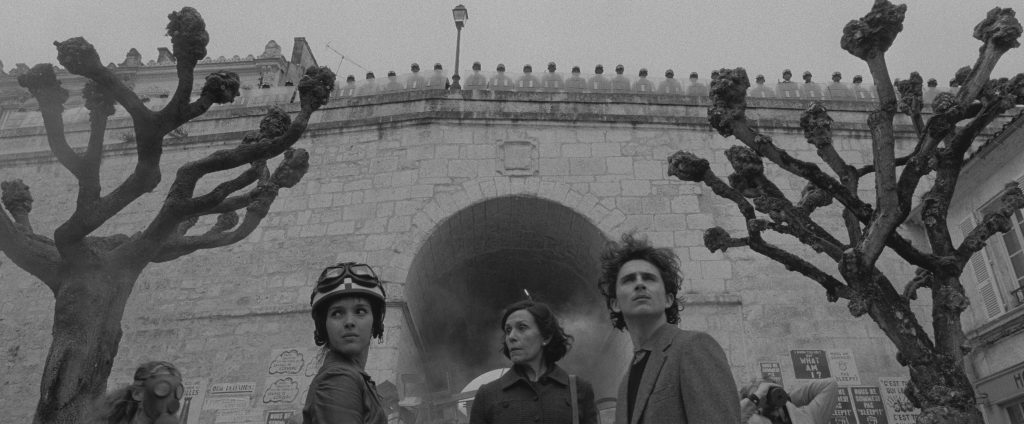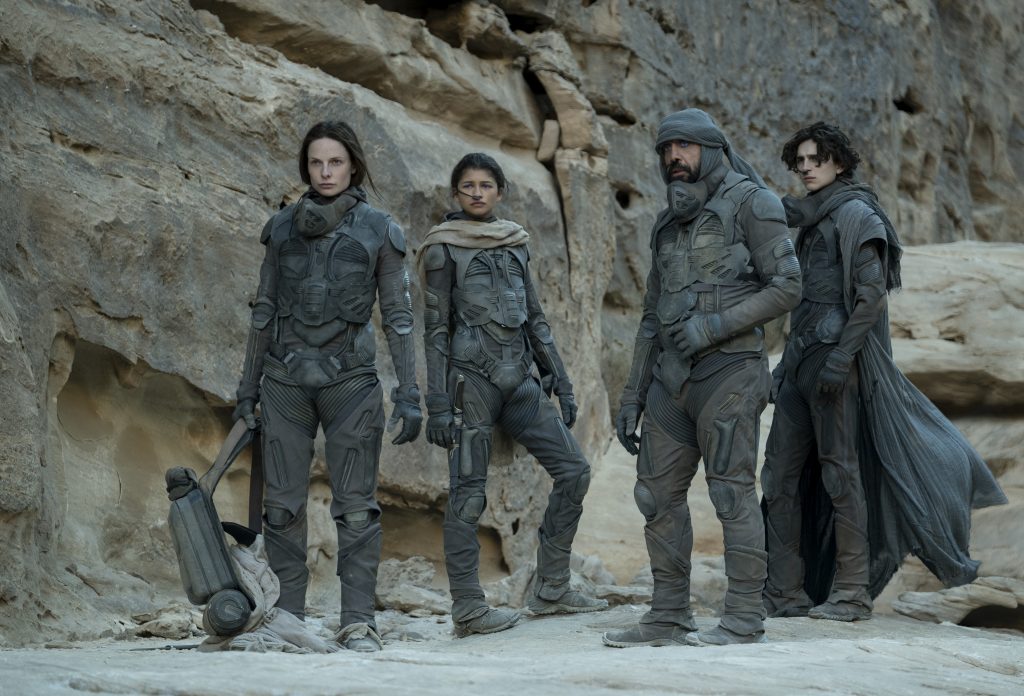October 27, 2021
by Carla Hay

Directed by Pat Mills
Culture Representation: Taking place in the Canadian province of Ontario, the horror film “The Retreat” features an all-white cast of characters representing the middle-class.
Culture Clash: Two women in a lesbian relationship go to a retreat at a remote house in the woods, where they encounter some homophobic serial killers.
Culture Audience: “The Retreat” will appeal primarily to people who are interested in tension-filled horror stories with LGBTQ people who happen to be at the center of the story.
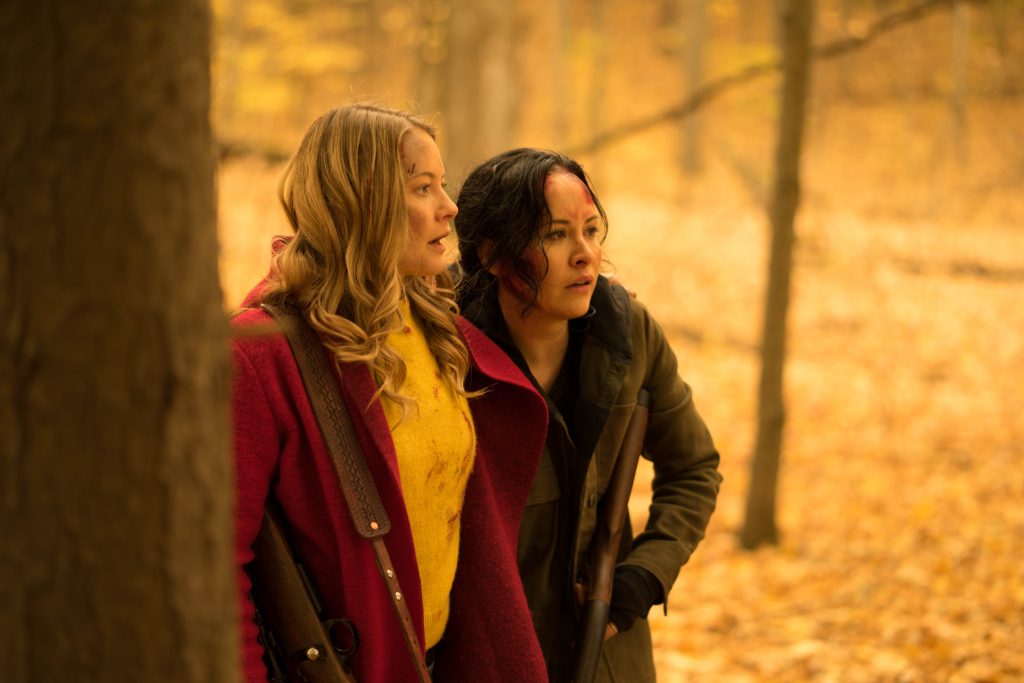
Even though “The Retreat” is completely predictable in how the story unfolds, it’s a horror movie that’s very effective in creating suspense and conveying “race against time” terror. One way that “The Retreat” sets itself apart from most other horror flicks that have killers on the loose is that the protagonists of “The Retreat” happen to be members of the LGTBQ community. The movie intends to show the horrors of homophobic hate crimes taken to extreme levels.
Directed by Pat Mills and written by Alyson Richards, “The Retreat” has a relatively small number of people in the movie’s cast. The movie also keeps it simple when it comes to the plot. However, that doesn’t mean this movie is simple-minded. One of the reasons why the movie is so gripping is that everything in it could realistically happen. This is not a horror movie where supernatural forces are the reason for the mayhem. The heinous acts committed in the movie are all from humans consumed by hatred and evil.
“The Retreat,” which takes place in the Canadian province of Ontario (and was filmed in the Ontario cities of Toronto and Mono Mills), doesn’t waste time in showing viewers that it’s a slasher flick. The beginning of the movie is set in a remote wooded area where gay couple Connor (played by Chad Connell) and Scott (played by Munro Chambers) have recently arrived at a bed-and-breakfast house rental at night. They hear strange noises coming from the woods. Scott goes to investigate, and Connor soon follows. And then, someone or something startles Connor and he’s attacked. The movie later reveals what happened to Connor and Scott.
Meanwhile, in Toronto, lesbian couple Renee (played by Tommie-Amber Pirie) and Valerie (played by Sarah Allen) are in a fairly new relationship. Their romance has reached a point where Valerie wants to know from Renee where the relationship is headed: Are they going to settle down together or are they going to keep it casual? However, Renee avoids answering the question because she appears to be commitment-phobic.
Valerie seems frustrated by Renee’s noncommittal answers, because it’s obvious that Valerie eventually wants to live with Renee, but Valerie doesn’t push the issue too much, so as not to alienate Renee. Later in the movie, Valerie tells Renee when the issue of their relationship brought up again: “If this isn’t going anywhere, let me know.” Except for this unresolved issue of where this relationship is going, Valerie and Renee seem happy and content with each other.
In the meantime, Renee and Valerie (who are both in their early 30s) are looking forward to their first big getaway trip together. It’s for a wedding planning retreat organized by Valerie’s friends Connor and Scott, who are engaged to be married. The bed-and-breakfast house where the retreat is taking place is owned by another gay couple, who have advertised the retreat as being a queer-friendly place. The house’s owners won’t be there, but Renee (who is driving for this road trip) looked up the lodging on the Internet and is satisfied that it will be a comfortable place to stay.
On the way to the bed-and-breakfast, Renee and Valerie stop at a convenience store because Renee needs to use the restroom. As Valerie waits near the cashier counter while Renee is in the restroom, a man in his late 30s or early 40s comes into the convenience store and immediately starts flirting with Valerie. He finds out that Valerie isn’t from the area and tells her, “I’d like to get to know you,” and he offers to show her around the area.
Valerie is polite but makes it clear she’s not interested. And when Renee comes out of the restroom, Valerie introduces Renee as her girlfriend. Once the man sees that they’re in a lesbian relationship, he backs off. But this is the type of movie where you know this won’t be the last time that Renee and Valerie will see this stranger.
Almost as soon as Valerie and Renee arrive at the bed-and-breakfast house, they can sense that something is wrong. For starters, Connor and Scott were supposed to be there already and their car is parked outside, but Connor and Scott are nowhere in sight. And then, Valerie sees someone lurking in the woods who seems to be spying on her and Renee.
At first, Renee thinks Valerie is imagining things. They go for a hike in the woods when Renee discovers something eerie: A cigarette filter that is still burning. It’s enough to convince Renee that someone has been watching them. Valerie and Renee run back to the safety of the house and see that Renee’s car is now missing.
As panic starts to set in, they go inside the house and find out that Valerie’s phone has been stolen from her room. Renee left her phone in the car. The house does not appear to have a landline phone. If viewers think it’s unrealistic that Renee and Valerie didn’t have their phones with them on their hike in the woods, it’s actually not unusual for people to go hiking without their phones and IDs. It’s not the smartest thing to do, but it happens.
Needless to say, all hell soon breaks loose after Renee and Valerie find out that they have been stalked and targeted for something sinister. The rest of the movie ramps up the tension-filled action. The trailer for “The Retreat” gives away a lot of what happens in the movie, including how Valerie gets her foot caught in an animal trap while she and Renee are running through the woods.
The movie’s trailer also reveals that there’s more than one villain involved who have eventually captured Renee and Valerie and are documenting this kidnapping for an audience. One of the villains is the man from the convenience store. His name is James (played by Aaron Ashmore), and his accomplices are Layna (played by Celina Sinden) and Huck (played by Patrick Garrow). Their motive for the deadly mayhem is revealed in the last third of the movie, although it’s a motive that’s not surprising at all.
Some of what happens is more predictable than other things. Just like a lot of violent horror movies, “The Retreat” is not for overly sensitive viewers, because some of the scenes are quite bloody and gruesome. Mills’ direction of “The Retreat” makes it a taut thriller where everything that’s depicted takes place within a 48-hour period. Everything is well-paced, and the musical score from Steph Copeland enhances all the terror that occurs in the story.
All of the acting is believable in how ordinary people react to being in similar horrific circumstances. Renee and Valerie do not have special training in combat skills, so much of what they do involves trying to use their wits to survive. “The Retreat” is not a horror movie with a mask-wearing killer who seems to come out of nowhere and has a superhuman ability of not being able to be killed. Whoever is reponsible for the evil in “The Retreat” represents the worst of humanity that looks “normal” and is living among us in plain sight.
Quiver Distribution released “The Retreat” in select U.S. cinemas, on digital and VOD on May 21, 2021. The movie is also available on Showtime and The Movie Channel.



